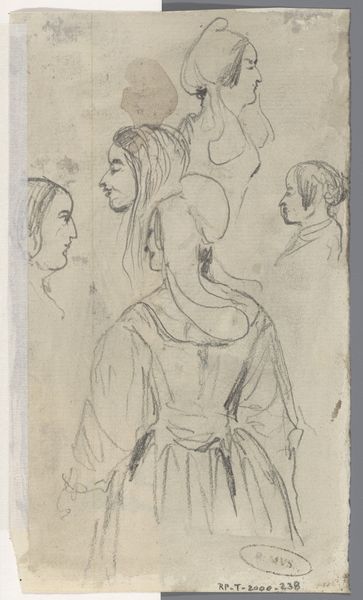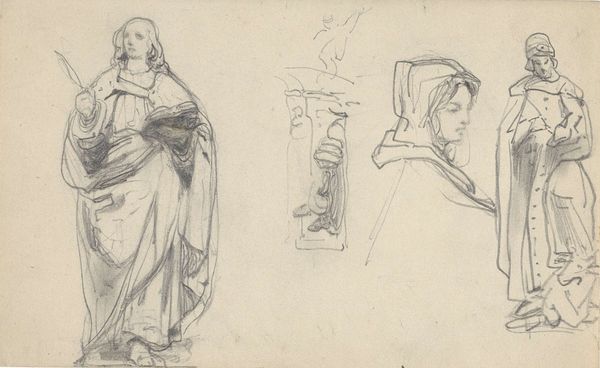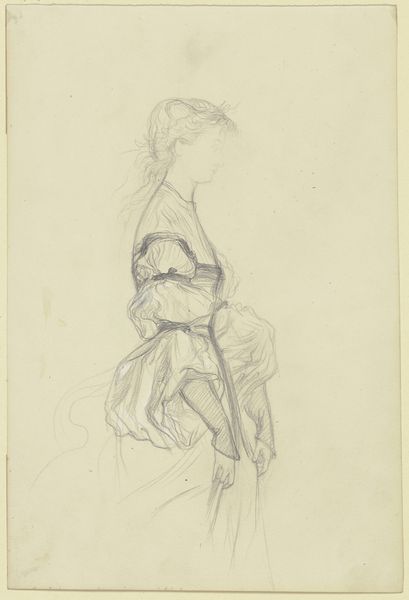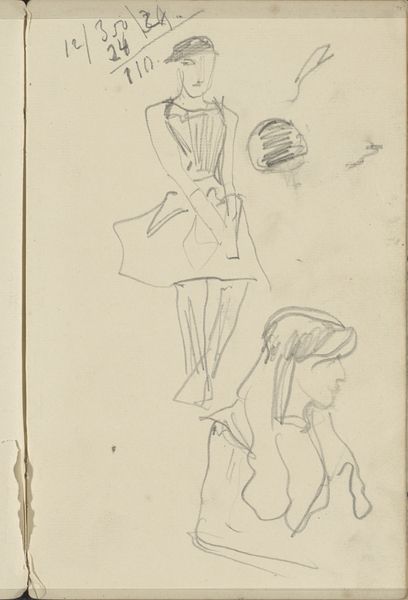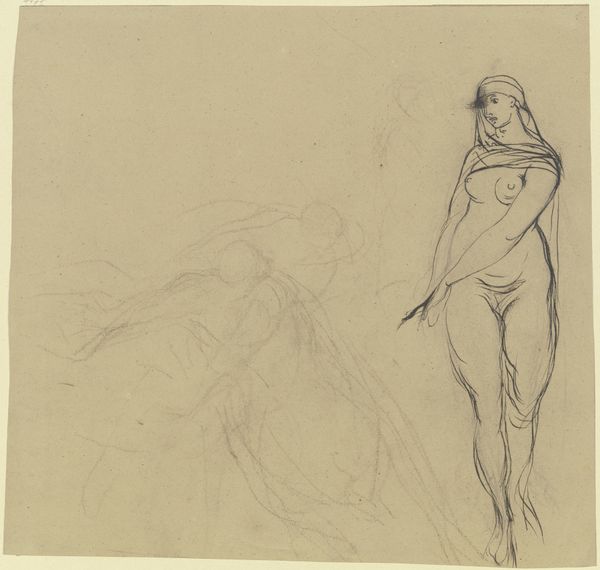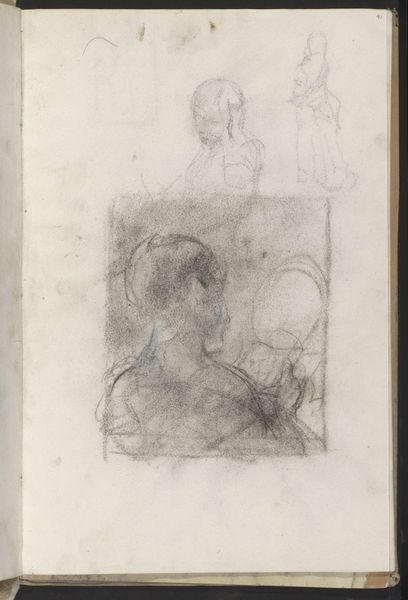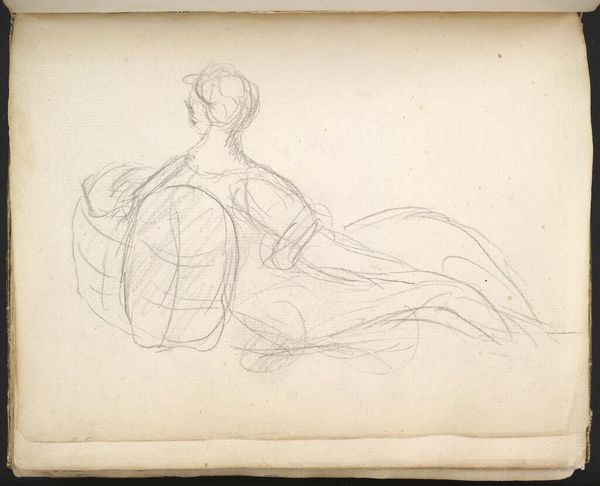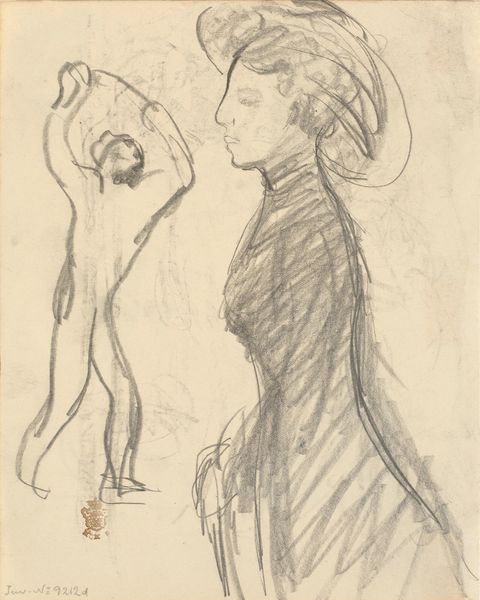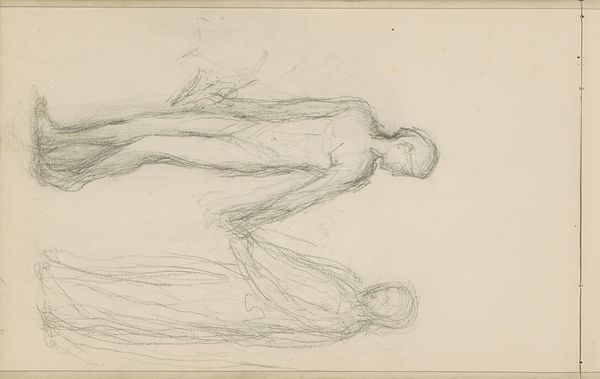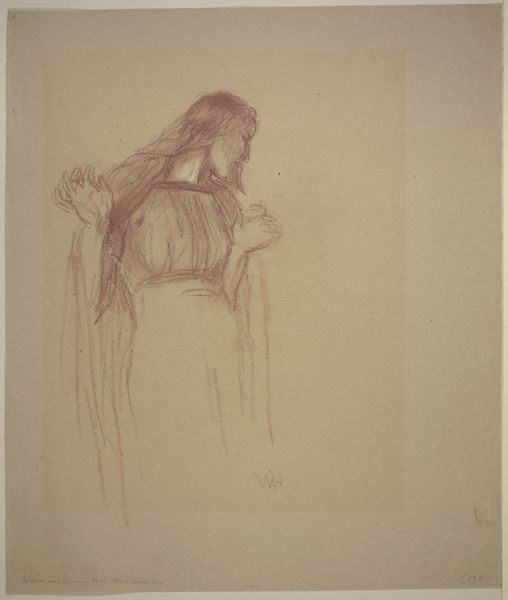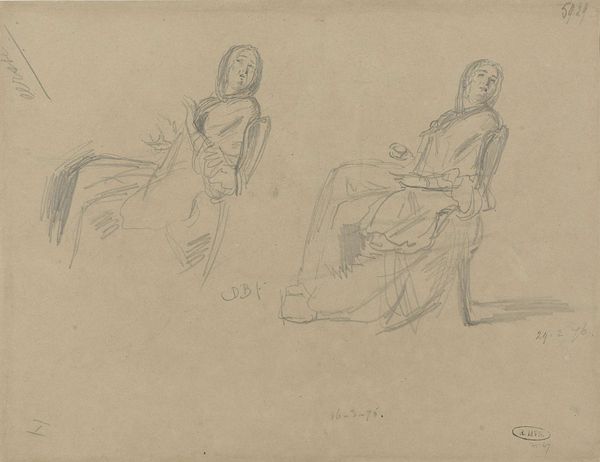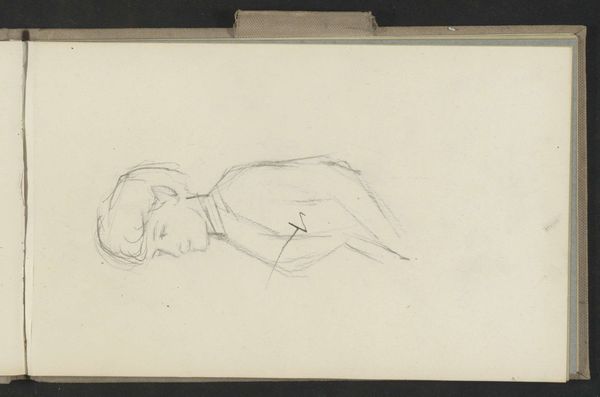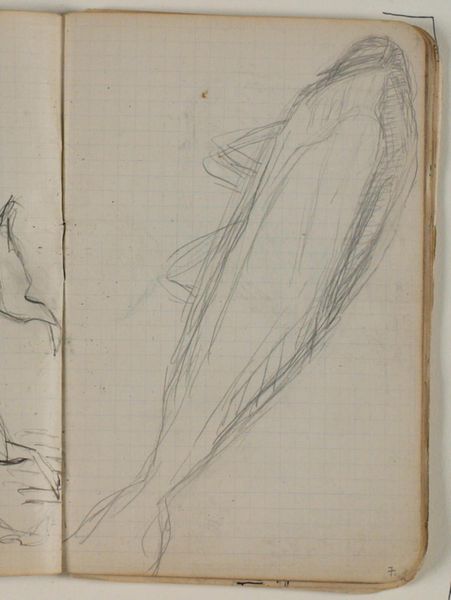
Kvinde i halvfigur og kappeklædt figur på en vindblæst høj 1896 - 1897
0:00
0:00
drawing, paper, pencil
#
portrait
#
drawing
#
art-nouveau
#
landscape
#
paper
#
pencil
#
symbolism
Dimensions: 152 mm (height) x 254 mm (width) (bladmaal)
Curator: This captivating pencil drawing is entitled "Woman in Half-Figure and a Capped Figure on a Windswept Hill." Agnes Slott-Møller rendered it sometime between 1896 and 1897. It’s currently part of the collection at the SMK, the National Gallery of Denmark. Editor: There's a quiet drama here. It's almost stark, yet incredibly evocative despite its unfinished, sketch-like nature. The way the lines convey the wind, especially, is striking. Curator: Absolutely. Symbolism and Art Nouveau were strong currents during that period, and Slott-Møller blends them beautifully here. The woman’s upward gaze, combined with the figure braced against the wind, it speaks to something profound. What symbols do you make of it? Editor: Well, wind, especially depicted with that much force, often symbolizes change, upheaval even. Perhaps she's looking toward a future shaped by powerful forces, personal or societal. I wonder about her social position; was Slott-Møller hinting at the role of women at the turn of the century? Curator: It's interesting you say that. The Symbolist movement often dealt with archetypes and idealized figures. So, the woman's profile could certainly represent the emerging modern woman, battling the winds of change but looking optimistically towards the horizon. Her clothing, although lightly sketched, lends itself to a certain upper-class status within Danish society. Editor: And the location--the coast, windswept. We know Slott-Møller favored themes from folklore. Does the location trigger those narratives? Or is there any reference to that in the piece? Curator: Her works, including this drawing, frequently romanticized the Danish landscape and, in turn, Danish identity, at a time when national identity was a topic of discussion and political importance. So, the windswept hill is more than just a setting. Editor: So, it is interesting to me that she almost always chose female figures, I wonder, what sort of a feminist reading would that allow us in the future, for the Danish identity for example? Curator: Well, that might make it even more complex, because for this artist, her identity seems tied to that of the landscape. Fascinating how an image, a sketch, of this kind, holds so much. Editor: Absolutely. This work acts almost as a marker—a visual testament to the push and pull of societal progress versus natural forces.
Comments
No comments
Be the first to comment and join the conversation on the ultimate creative platform.
